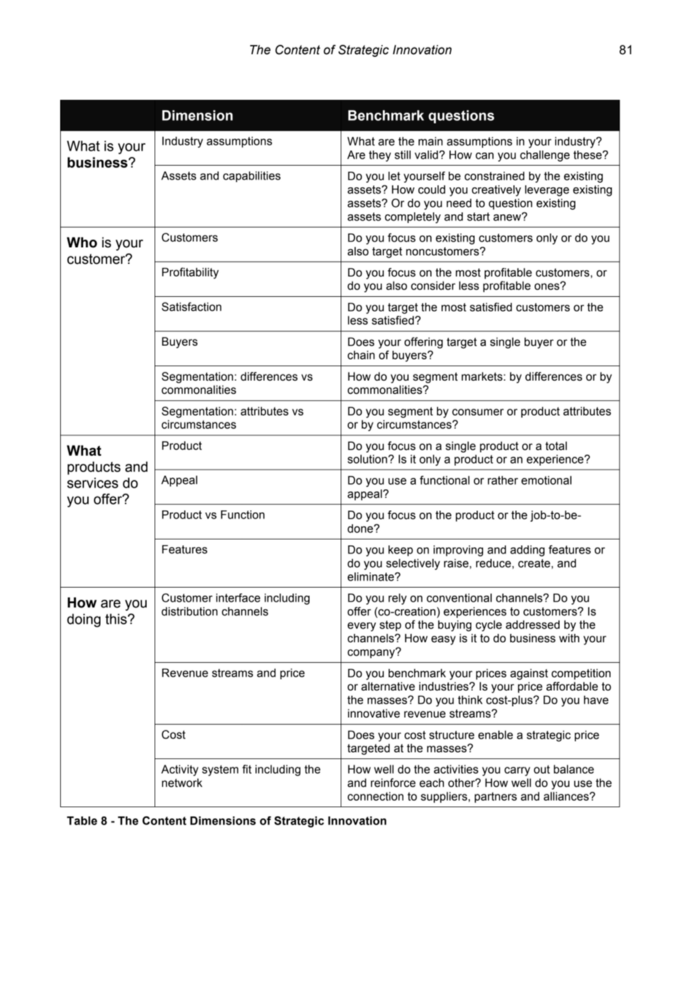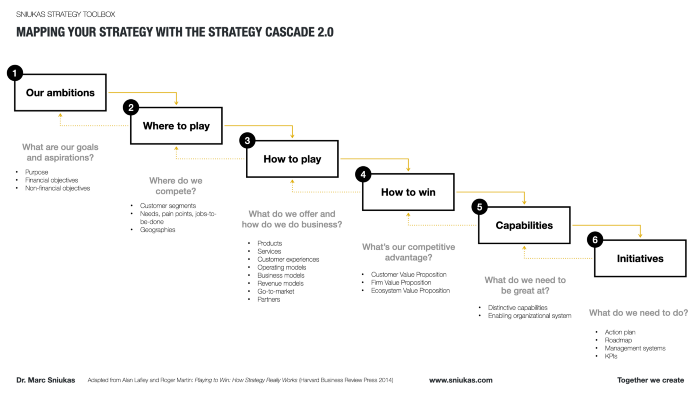How to Craft Your Strategy Ambitions in 5 Steps
If you want to be happy, set a goal that commands your thoughts, liberates your energy and inspires your hopes. — Andrew Carnegie
3 min read
Dr. Marc Sniukas
Feb 7, 2023 12:00:00 AM
When you start thinking about your strategy, you first need to honestly evaluate what is going on, both inside your organization and in the market. Especially if there’s a lot of change in the environment like we have seen for the last couple of months.
Below is a list of questions to ask yourself and discuss with your team.
You first need to understand what’s happening within your company. I suggest you look at two things: your strategy and what I call the “9 pillars of your organization”.
Start by describing your current strategy. Pick any framework that you prefer working with, as long as it covers these four essential questions:
Below is a table from my first book, which further decomposes these questions, if you’d like to dig a little deeper.

Other frameworks that work well at this stage are Lafley and Martin’s Strategy Cascade and my adapted version based on Art of Opportunity.

Once you have described your strategy, ask yourself:
Once you have evaluated your strategy, assess how well your organization is doing along the following nine pillars:
Looking at these nine pillars: what are your strengths? What are your core capabilities? What weaknesses do you see?
To do a quick check, you can evaluate your performance, maturity or your satisfaction of these nine pillars on a scale from 0 to 10. Ask your colleagues to do the same. Doing this will produce great insights for lively conversations!
After you have evaluated and drawn a clear picture of how well your current strategy is performing and what is happening within your organization, you need to also look at what’s happening around you.
Diagnose your market by looking at customer satisfaction, competition, market potential, etc. All the classics of strategic analysis. Use Porter’s 5 Forces, for example, or use more modern tools, like the Blue Ocean Strategy Canvas, to visualize your industry’s competitive factors and understand where there are blue oceans.
But don’t only analyze the here and now. Think about your industry trends, what disruptions do you see or could potentially happen in the future?
Summarize your insights by answering two questions:
Having completed the steps above, the next conversation to what is “So what?” Align on the challenges you face and the issues that need to be solved.
Or maybe, all is well, and you have confirmed that your strategy is still valid. At least you’ll know and can feel confident about it.

If you want to be happy, set a goal that commands your thoughts, liberates your energy and inspires your hopes. — Andrew Carnegie

The importance of strategy today. Strategy is now more critical than ever. In turbulent times the seduction to keep on doing what you're doing,...

You are probably thinking ‘shareholder value’ right now, aren’t you? Shareholders are no longer the only constituency for whom companies need to...